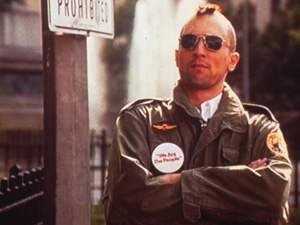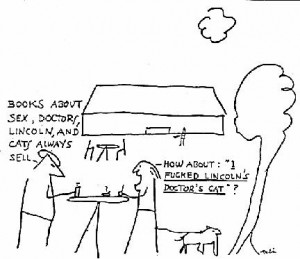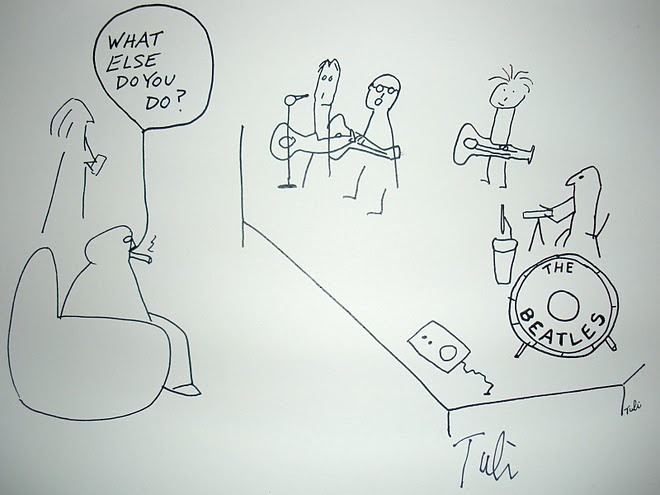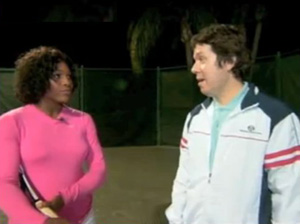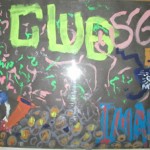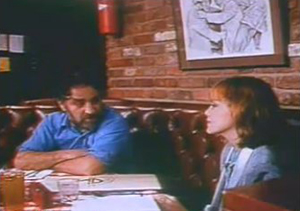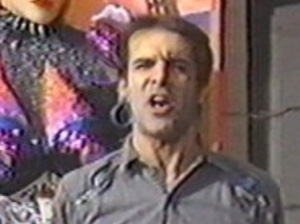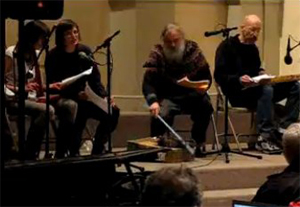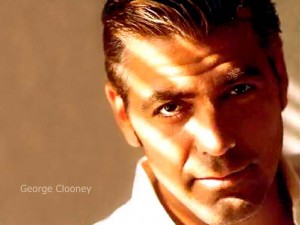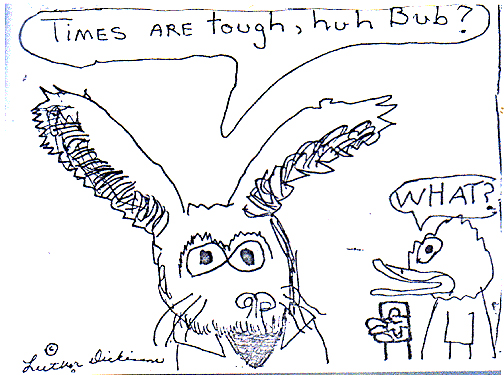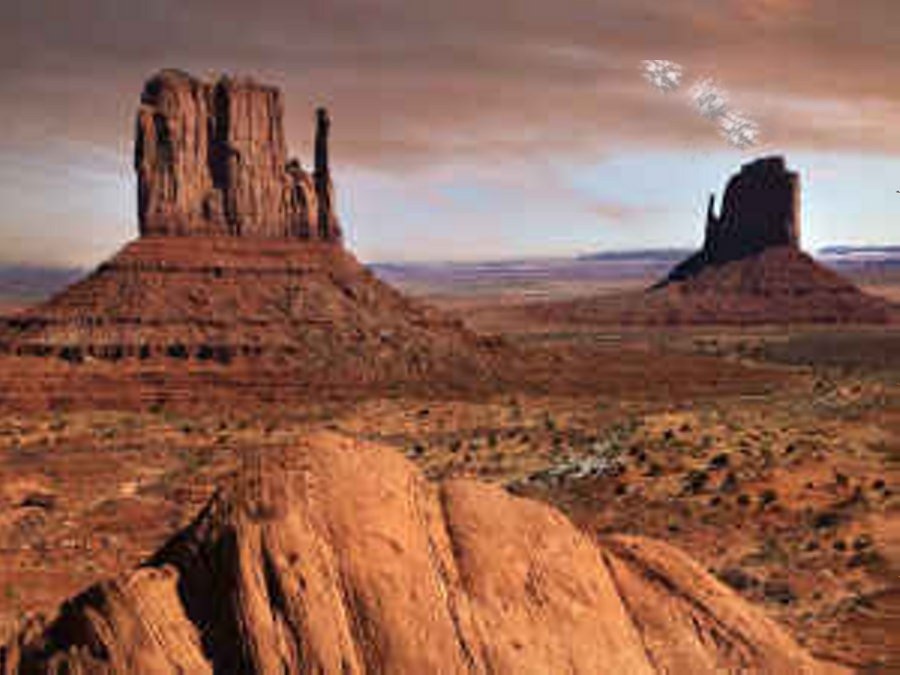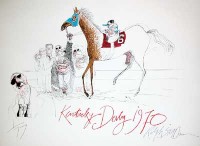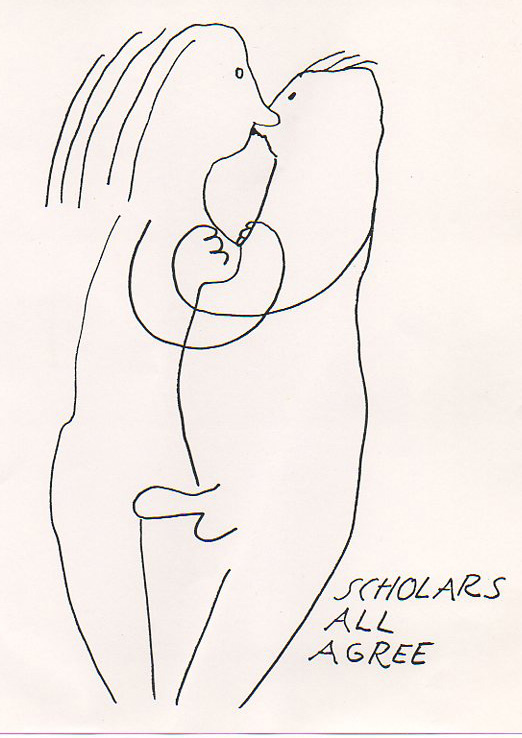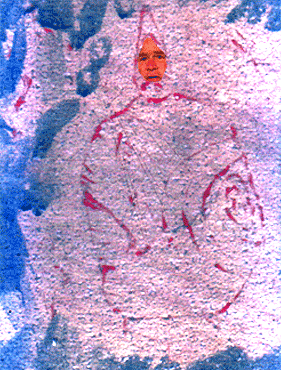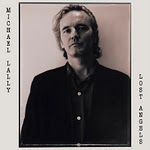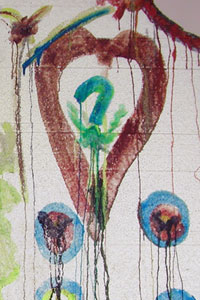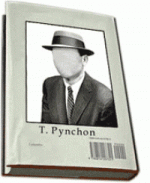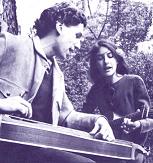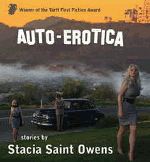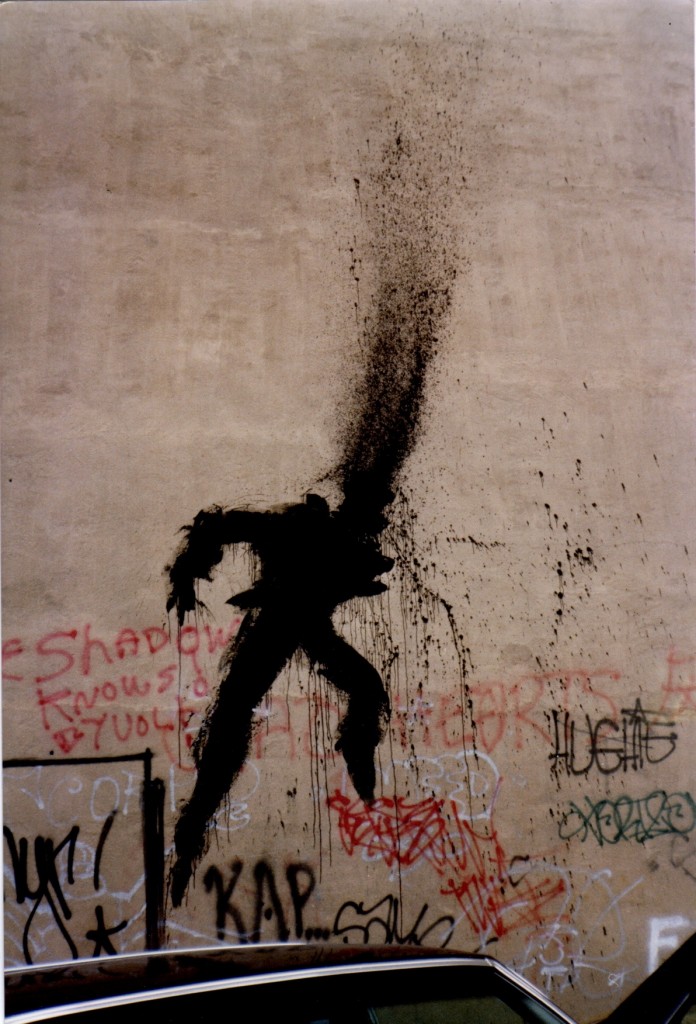FAMOUS LONG AGO REDUX:
Raymond Mungo’s
SILK ROAD MAHABHARATA #10
Raymond Mungo’s
SILK ROAD MAHABHARATA #10
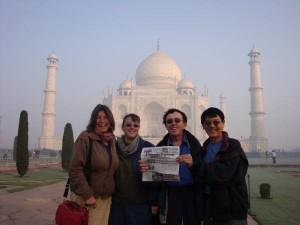 Ellen Berger, Alicia Doddy, Ray Mungo and Robear Yamaguchi
Ellen Berger, Alicia Doddy, Ray Mungo and Robear Yamaguchi
“We offer comfort with a touch of class,” read the brochure for the Jor Bagh 27 hotel. “The all new Guest House: Centrally located opp. Lodhi Garden for business executives and tourists. Elegantly furnished air conditioned rooms with attached baths.” Reading this in bed the morning after Christmas, we had to laugh – a good sign of the benefits of a full night’s sleep. What had seemed so depressing the night before was merely tacky, even amusing, in the early light of dawn. The “touch of class” boast was particularly hilarious. We kept looking for that “touch.” But there was a little bit of hot-ish water running weakly in the shower, and the reminder about the Lodhi Gardens was useful. The New York Times piece that had sent us to the Jor Bagh (“36 Hours in New Delhi”) described the garden as a true oasis of peace and beauty in the city, especially popular with early morning joggers and hikers out to get some exercise before their workday began.
It was 7 a.m. and the sun was rising. Helen and Ginnie would not appear for several more hours, we knew. So Hub and I threw on some warm clothes and set out to explore this urban wilderness, noted for its 17th century mausoleums, many species of birds and other wildlife and lush gardens. The hotel was indeed “opp.” the Lodhi Gardens as advertised, but getting there required crossing a six-lane boulevard teeming with high speed traffic, with no crosswalks or traffic lights within view. We had to wait for a break in the oncoming rush of cars, run like hell to the median strip, and wait there, marooned, for another opening to dash to the opposite side, like Mexican illegals trying to cross the I-5 freeway in San Diego.
It was a life threatening gamble but worth it. Once we stepped through the black turnstyles into the park, we left the hideous city behind and entered a charmed province of greenery, flora, fauna, stately old buildings, wandering peacocks, chattering monkeys, eerily silent groves, meandering pathways, enormous expanses of open land blessedly free of vehicular traffic but full of roaming humanity. Middle class looking Indians jogged, ran, bicycled, strolled and rested along pathways and trails, some in animated conversation, some alone, some elderly and frail, but very few children. The morning was briskly cool and damp; it felt good to be walking so we just kept going deeper into the gardens until we were thoroughly lost. We happened upon the National Bonsai Nursery, an Alice in Wonderland maze, fields of exotic flowers, a massive glassed-in arboretum, a koi pond, a lake populated with ducks, a butterfly sanctuary, the ruins of ancient mausoleums. The deeper we penetrated these Lodhi Gardens the more distant the roar of New Delhi became, until we could almost-not-hear it at all.
The walk in the park gave us some peaceful space and time to consider ourselves and take stock of our journey. We were exactly half way through the trip, with another full week to go. The souls of all those people in Cambodia were incorporated into our memory and affection. The vast and unknowable nature of India stretched ahead of us. Today, a day to absorb Delhi, New and Old. Tomorrow, a train to Agra and three days at the Taj Mahal. From there, a long journey into the heart of royal Rajasthan and three nights in a palace. Then finally, one last night back in New Delhi before the dream would end on a jet plane home. But where was home, exactly?
India had in fact changed since the last time I saw it. For one thing it wasn’t cheap anymore, not for us. With the hotel rate ripoff, expensive restaurant, taxi rides and assorted bribes and extortions, we spent more on our first half-day in Delhi than on four full days at the Angkor Wat in Siem Reap. But I wasn’t an impoverished youth on the path to Enlightenment anymore, either, but a man over 60 seeking comfort and safety from the still-dangerous Indian social upheaval. India has pretensions now – but it never solved or addressed the serious problems of its underclass. Beggars still wailed in the street. People chased and grasped after money in a more truly desperate fashion than the average American could fathom. There was plenty of danger afoot and plenty of things to beware of, but still a vibrant population of indefatigable energy, still a wise old collective memory of otherworldly consciousness.
Our circuitous route eventually returned us to the busy street. We heard it before we saw it. Nearby to where we had entered, we found a gorgeous restaurant not yet open for the day but we could see its charming outdoor tables through dense landscaping, and vowed to return there for lunch. It was bound to be expensive but a lovely antidote to the chaotic street, on which we discovered a convenient taxi stand at the restaurant’s entrance gate. We could get a cab there, no longer dependent on the hotel’s kickback schemes. Things were definitely looking up. If you happen to find yourself in New Delhi, go straight to the Lodhi Gardens, you’ll feel better! As Central is to New York, Stanley to Vancouver, and Golden Gate to San Francisco, Lodhi is to Delhi. We couldn’t wait to share the news of this discovery with the ladies.
Back at the Jor Bagh, where they had gamely ordered breakfast (the coffee was “weird”) from the pushy room service guy, Helen and Ginnie were glad to find us in an ebullient mood and quickly endorsed the plan to have a leisurely alfresco lunch in the Lodhi Gardens after spending the morning exploring historic monuments in Old Delhi. I remembered that original city as ancient, crumbling, dusty, crowded and dangerous, but I used to go there to score ganga on the street, where it was cheap and readily available. Don’t worry, I assured one and all, we got high in Cambodia and we can do it here. Indeed, the easy availability, low price, and high potency of Indian grass and hash, plus a dope-laced yogurt drink called bhang, were among the attractions that brought our counterculture pilgrims to India in the first place. And, almost incidentally, we could tour the great Red Fort which was the city’s premier tourist destination, featured in every guidebook. See, we’re having fun in Hell. Maybe I’ll even die and go to Heaven again.
Outside the hotel, the gangsters clustered at the gate as ever, pouncing on us as we left the premises, chanting their offers of service. Could they get us a cab, tour us around, take us to some shop, etc. I presume they did this routine on all the guests, but if there were any other guests staying at the 27 Jor Bagh, we never saw them. We ran through the traffic to the taxi stand in front of the Lodhi Gardens restaurant and there lucked into a shiny yellow Mercedes driven by a Sikh in a turban. Now you must realize that Sikhs are one of the upper castes in India; back in the 1970’s they held a monopoly on taxi and truck licenses, distinguishing them from lower forms of transport such as tuk tuks, pedal powered or human powered rickshaws. Sikhs are educated and vegetarian and seem to be universally honest. I never met a Sikh driver who cheated me on the fare or tried to take me somewhere I didn’t want to go. It is common knowledge, especially among themselves, that Sikhs are on a higher path. But they are conservative, they don’t smoke or drink; you would never ask a Sikh to score dope, for example, because they consider smoking ganga strictly a low class vice, and you never expect a Sikh to take you to a disreputable place or engage in black market money changing.
Our new driver was soft spoken, articulate and friendly, and his cab was spotless and luxurious. Hearing that we wanted to see the Red Fort in Old Delhi, he offered to be our driver for the day at a very reasonable price of 100 rupees ($2) an hour. We agreed to 300 rupees for the morning and another 300 for after lunch, and settled into the cushion seats with a sigh of relief. He drove us all around town, pointing out places of interest, commenting calmly on conditions of social unrest to be avoided, neighborhoods to beware of, restaurants worth patronizing (Sikh ones, no doubt), sights worth seeing. He inquired politely about our backgrounds and was evidently pleased that we were (mostly) teachers and probed our thoughts on education and politics. And he took us to the Red Fort, advised us what to see and do there, agreed to return and pick us up at a specific time, and declined payment until later. It’s hard to overstate how much we appreciated this elegant chauffeur, all the more so when we stepped out of his Mercedes and were immediately surrounded and assaulted by a frenetic mob of beggars and urchins hawking trinkets, the very sight of four pink Americans emerging from a yellow limousine driving them into a Saint Vitus dance. They surrounded us and followed us to the gates of the Red Fort, clutching our sleeves and chanting their exhortations. I made a mental note to ask one of the boys for ganga when we were finished visiting the fort; this teeming street scene was exactly the sort of venue for that kind of purchase. Boys will run and fetch you a baggie, but never pay the kid in advance. It was worth a try.
Uniformed police guarded the fort entrance and kept all the street riffraff at bay as we purchased our tickets and were admitted into the quiet majesty of the fort and its sprawling inner courtyard, plazas, gardens and pathways. The place is a relic of a bygone age in which India was a rich and mighty empire. These crumbling stone walls and castles protected the wealthy and powerful from the barbarian throng as much today as ever in history.
Helen was taken by the convergence of architectural influences in the various buildings, and we enjoyed poking around in them, taking snapshots, observing the other tourists. There was a school field trip contingent of high spirited boys in preppy uniforms, a tour busload of Chinese, but the place wasn’t crowded and we strolled around at a leisurely pace until it was time to go back to our car and driver.
Exiting back onto the street, we were again engulfed by the same glut of boy merchants waving postcards and souvenirs and I started asking them point-blank for ganga, but they ignored the question. Perhaps they didn’t know what “ganga” means, but that seemed unlikely to me, it’s very common in Old Delhi. At any rate, no kid responded to my request so I started asking the adult beggars, but without success. Hmmm.
Happily, our Sikh was waiting at the assigned spot and we piled back into the soft Mercedes and sealed ourselves off from the roiling multitudes. On the way to lunch at the Lodhi Gardens, we arranged for our driver to give us two hours to eat and rest and then pick us up at 27 Jor Bagh for the afternoon tour, in which we’d visit the famous Grand Mosque.
From the moment we were greeted by the maitre d’ and escorted to a table under a leafy bower, we knew that the Lodhi Gardens restaurant was going to be a classy experience. The table was covered in starched linen, with heavy cutlery and leaded crystal goblets. Attentive staff, crisply uniformed, poured ice water and rushed our first (but not last) $50 bottle of wine to the table as we perused the thickly bound menus. Most astonishing – medallion of sirloin. I’d never seen steak on offer in India before and in fact thought it was illegal in a land of sacred cows roaming the streets. So I ordered it, rare. With peppercorn sauce? Yes, sir. I’m having a cow in New Delhi. Oh, and are we ready for another bottle of wine? Certainly.
What a land of contrasts. On the avenue beyond the hedges, not 20 feet away but invisible to us, the poor were kicking up dust. We in our sheltered and landscaped faerie universe were living like rajahs, waited on hand and foot. Across the street were our bare prison cells, but our lunch table was as grand as Versailles. The Red Fort was monumentally great, but you had to fight your way through pushy solicitors to get in. Our emotions, too, kept swinging between extremes. We were alternately mortified and delighted, depressed and euphoric, terrified and hopeful, down and up, black and white, angry and grateful.
But for the magical two hour lunch in the gardens, we were ecstatic – well fed, half drunk, comfortable and safe, maybe even a bit smug over having hired our own driver and thus escaped the clutches of the Jor Bagh vampires. When the Sikh pulled up in his yellow Mercedes to meet us outside the hotel gates, the gang was visibly flustered and resentful, and we drove off to tour the Grand Mosque in a giddy mood of self-satisfaction.
I asked the Sikh if he would like to drive us to the train station the following morning and he agreed readily, citing his price, so we booked him for eight a.m. Our confidence was soaring. For the first time in Delhi, we felt in control of our circumstances and serenely sure we would get out of town and on our way to the Taj Mahal with no further suffering or hassle.
Land of contrasts: this mood couldn’t last. The Sikh explained that his taxi couldn’t take us all the way to the Grand Mosque. The last mile or two of the approach was closed to vehicular traffic. He would get us as close as possible, transfer us to pedal-drawn rickshaws, and wait for us. We weren’t thrilled at this prospect, and for a moment Ginnie thought she might not go through with it. She was reluctant to get out of the cab and into the teeming streets of the increasingly dusty, slummy, dangerous neighborhood of Old Delhi, and she didn’t trust the safety of the rickshaw. (It was pretty hairy-looking compared to the sumptuous cab.)
But, we figured, we didn’t come all this way to be afraid of an authentic Indian experience, and by all accounts this mosque was a must-see attraction. Don’t worry about taking off your shoes to enter; you just leave them in the custody of a paid guardian at the gates. Also, I was thinking, this neighborhood thick with low life was ideal for scoring that ganga I was intent on getting before leaving town.
So we climbed into two creaky rickshaws and proceeded to thread through a sea of humanity to the mosque. Pilgrims by the thousands were encamped on the dirt road approaching its grand stairway. People were cooking, chanting, begging, crying, hawking, it was like a movie set – raucous, colorful yet ashen, chaotic and out of control. Hang on to your seat and your wallet. The rickshaw moved so slowly that vendors and beggars of all stripes could easily approach us. “Ganga?” I asked the banana salesman. “Ganga?” the kid begging for baksheesh. Ganga, anyone? It was hard to believe that nobody had any for sale. Even the straightest of guidebooks acknowledged that dope is very easy to get in India and law enforcement virtually nonexistent. (This information is usually offered in a cautionary tone; watch out for bhang in your lassi, someone might drug you in order to rob you. Beware of bad dope spiked with who-knows-what.)
This is India, but what is this?
This is the India you saw in your mind, not modern but ancient, not rich but “full of life.” The India of National Geographic photo shoots. The one you came for. A Flip video moment.
The mosque was seething with people milling about, but not praying since it wasn’t prayer hour, when nonbelievers are prohibited from entering. We surrendered our shoes to the imperative demand of the shoe-checkers, but noticed when we got inside that only foreigners had done so. The locals simply carried their shoes and walked barefoot. We were high on a hill overlooking a seemingly endless sprawl of slums and their inhabitants with dust and smoke rising through the air and cacophony. Here was a place of worship and center of gravity in the Delhi Muslim ghetto, as thoroughly mired in previous centuries as Connaught Circle was in the current one. We slipped out of time. Who knows how long we were lost?
On the slow ride back to meet our driver, the rickshaw just naturally delivered us to a souvenir shop peddling everything from key chains to silk saris. They even had a live cobra, coiled to strike. But no ganga. We went away empty handed but full of a dreamy trance.
- to be continued –
Silk Road Mahabharata #1 at http://smokesignalsmag.com/7/?p=40
Silk Road Mahabharata #2 at http://smokesignalsmag.com/7/?p=1330
Silk Road Mahabharata #3 at http://smokesignalsmag.com/7/?p=2075
Silk Road Mahabharata #4 at http://smokesignalsmag.com/7/?p=2279
Silk Road Mahabharata #5 at http://smokesignalsmag.com/7/?p=2548
Silk Road Mahabharata #6 at http://smokesignalsmag.com/7/?p=2731
Silk Road Mahabharata #7 at http://smokesignalsmag.com/7/?p=2828
Silk Road Mahabharata #8 at http://smokesignalsmag.com/7/?p=2916
Silk Road Mahabharata #9 at http://smokesignalsmag.com/7/?p=2916
Raymond Mungo is the author, co-author, or editor of more than a dozen books. He once ran for Governor of the state of Washington on his American Express Card. In his spent youth, he attended Boston University, and served as editor-in-chief of the Boston University News in 1966-67; where he spearheaded draft card burnings and demonstrations against the Vietnam War, and in 1967 co-founded the Liberation News Service (LNS), an alternative news source that split off from College Press Service (CPS) and was the forerunner of not only the underground press circuit but alternative weeklies all over America, courtesy of his classic, Famous Long Ago: My Life and Hard Times with the Liberation News Service. Both the original Food Editor and first Sports Editor of Smoke Signals back in 1980s, Mungo’s back with us again, almost 30-years later, as quick witted and nimble as ever, but of course in a totally different incarnation.



